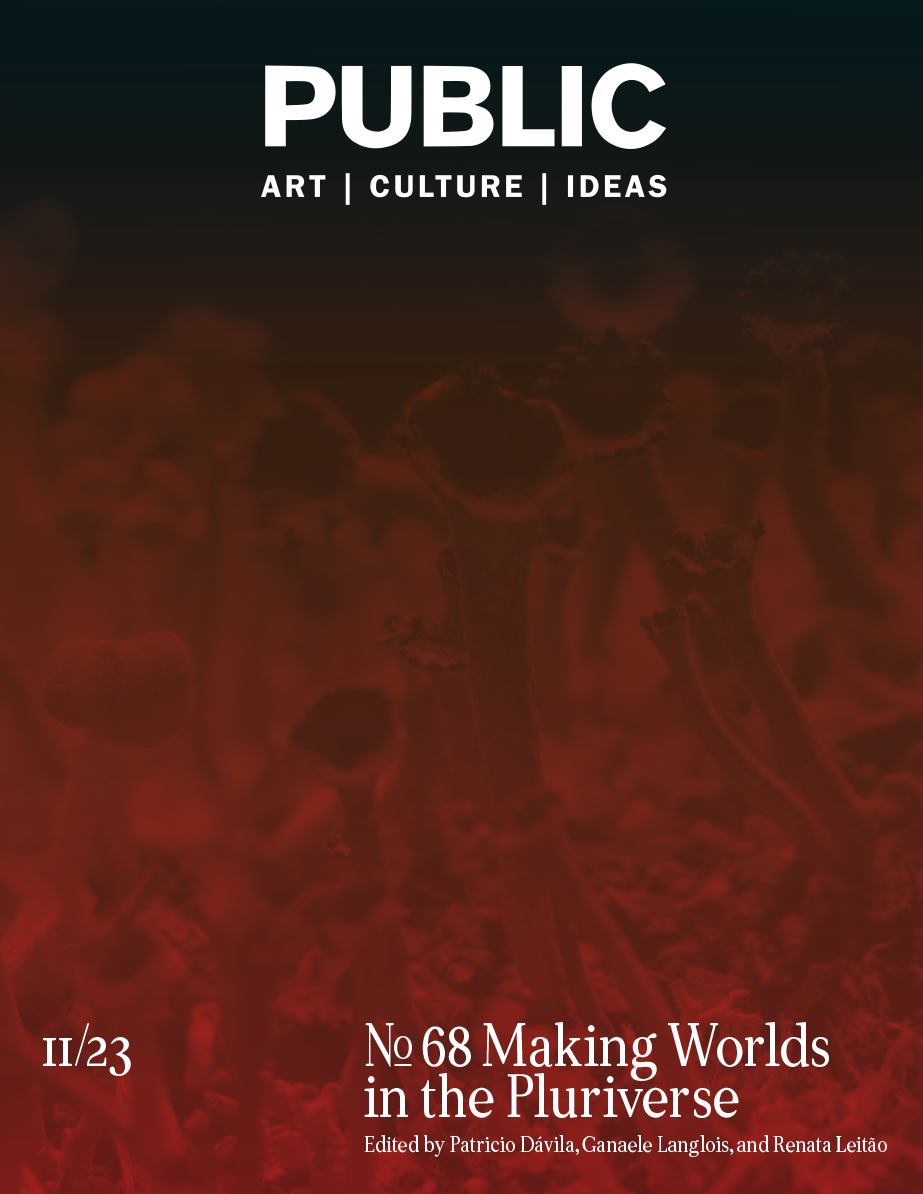- Home
- A-Z Publications
- Public
- Previous Issues
- Volume 25, Issue 49, 2013
Public - Volume 25, Issue 49, 2013
Volume 25, Issue 49, 2013
-
-
Introduction: Black holes in the sciences - trauma, culture, aesthetics
More LessAuthors: Paula M. Gardner and Charles ReeveAbstractDrawing on philosophy, trauma theory and aesthetics, this issue of PUBLIC presents trauma in its complexity of experience across cultures and individuals. Trauma is a common, empathy-ready experience that we might engage as mirror to our pained or apathetic responses, and might harness to light personal political fires. Traumatic response is framed beyond mental illness or coping, as a symptom of a larger cognitively informed process, begging for query beyond social science models, where processed thought and perception are embodied processes residing in a world rife with complex aesthetic representations and simulations.
-
-
-
Frames of atrocity: Resistance and left melancholy
More LessAbstractThis article considers current dilemmas for artists and critics who desire to respond to contemporary violence, trauma and atrocity free of any melancholic attachment to past politics and ideals - a failed or lost campaign or struggle. Described by Walter Benjamin as the problem of 'left melancholy', its persistence in the 1990s and beyond into the post-September 11 era necessitated seizing possibilities to embrace and develop radical ways of responding to contemporary events. The article explores theories and art practices that address pressing questions without preconceived answers. Given the horror of the present, what would an effective political intervention in the field of imagery be like? How to avoid the premature - melancholic - validation of available paradigms of representation to produce enabling cultural work? Recent examples by Regina José Galindo, Mark Boulos, Renzo Martens, Alfredo Jaar and Lars Laumann are examined in the light of such questions.
-
-
-
The everyday life of the Berlin Wall: College Station, Texas/Berlin, Germany
More LessAuthors: Blake Fitzpatrick and Vid IngelevicsAbstractThe project, 'Freedom Rocks' by Blake Fitzpatrick and Vid Ingelevics traces the Berlin Wall as a now mobile ruin to North America post-1989 as well as to storage and commemorative sites in Berlin itself. This portfolio of photographs is drawn from the project and depicts twin versions of the sculpture The Day the Wall Came Down (1997-1998) by Veryl Goodnight. The sculpture has been installed in College Station Texas and Berlin, Germany, two locations radically distinct in their lived histories of the Cold War. These distinctions are eclipsed by a triumphalist artwork that collapses geographical and historical context into the sameness of the victor's vantage point. While commenting upon Cold War history, the piece functions to tame or redirect the traumatic legacy of the Wall through a post-Cold War depiction that equates meaning with form while obscuring the site-specific context of place.
-
-
-
Catharsis in inuit art: A way to heal wounds
More LessAbstractContemporary Inuit Art is often perceived as either a romantic form of creation or a commercially aggressive industry. Yet it appears that art played more than a simple economic role in the Inuit history, and that a small percentage of the Arctic production, lesser-known to wide audiences, has been dealing with intimate as well as collective issues for the last twenty years. This article intends to reconsider the social impact of Inuit art, both at its beginnings in the 1950s and today. A selection of works by Inuit artists, who were subjected to trauma and tried to expel it through the creative process, will follow a reminder of the policies launched after the World War II by the federal government. The cathartic process itself and its intrinsic difficulties will also be considered. Art will finally be questioned as a way to untie tongues and create a dialogue towards healing.
-
-
-
'For You The War Is Over': An airman remembers
More LessAbstractLloyd C. McCracken grew up in a rural community on Canada's east coast. As a teenager, with the World War II entering its peak, he volunteered for the Royal Canadian Air Force as a tail gunner, a job with extreme hazards. Fifty years later, in 1992, McCracken produced this remembrance of his time in the Air Force - his training, hair-raising sorties over Germany and, especially, two years he spent as a POW in a German prisoners of war camp. This text now includes associated documents and photographs. His story reveals a human phenomenon that we nevertheless fail to understand - our uncanny ability to adjust to the inconceivable. Our ability to hold it, live in it, relay it. As his story recounts, McCracken had plenty of traumatic experiences. Yet, his descriptions of these experiences expose details without registering their effects. For readers, comprehension of the emotional happens elsewhere - above and around the words - in envisioning the effect of these experiences on McCracken and his family. Understanding is only discoverable in the text's resignation, its absences, its restraint.
-
-
-
The sincerest form of irony: Fun and games in a post-September 11 world
More LessAbstractA look at the ironic sensibility of artist's reactions to the World Trade Center attack by turning to media that historically have been coded as incapable of performing seriousness and competence - comics, animation and video games. The article provides close readings of: Art Spiegelman's comic In the Shadow of No Towers, Joe Peragine's animation 9/11/01, and Ben Langlands and Nikki Bell's video game The House of Osama bin Laden. Together, works highlight the inadequacy not only of their responses, but of any response.
-
Most Read This Month

Most Cited Most Cited RSS feed
-
-
NIGHTSENSE
Authors: Jennifer Fisher and Jim Drobnick
-
- More Less

